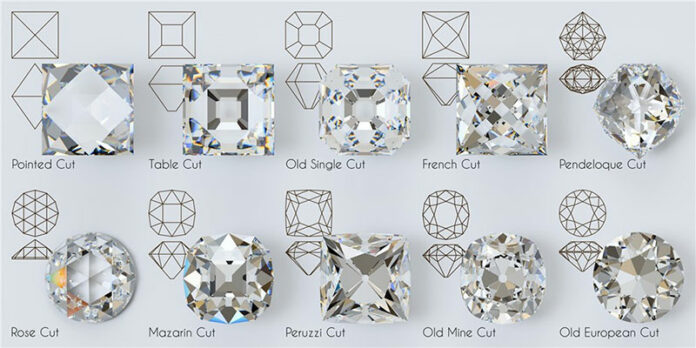The average consumer cannot detect the flaws in diamonds with the naked eye. Most consumers do not even know the probable flaws present in diamonds. Below, 11 such flaws are covered so that anyone buying a diamond knows the problems that can exist when it comes to diamonds. After going through these flaws, if one still wants to understand the details of them, one can learn more at Rare Carat, which is a genuine and trustworthy place to buy diamonds.
1. Bearding
If there are multiple small hair-like inclusions in the diamond, these are known as bearding. They result from the improper bruting process of the diamond. Depending on the number of such inclusions, they might be visible to the naked eye.
2. Graining
If there’s any irregular crystal growth on the diamonds, it is known as graining. These can be in the form of reflective lines or can be white or colored, depending on the growth. Too many such lines give a hazy appearance to the diamond and impact its clarity. One can even Learn more at Rare Carat about the clarity and flaws in diamonds.
3. Cavity
An opening in the surface of the diamond is known as a cavity. During the polishing process, if the diamond gets damaged externally or falls down, it causes a cavity. A cavity can be visible to the naked human eye if it is big enough. However, in many cases, the average consumer cannot detect it easily.
4. Crystals
The deposition of minerals on a diamond’s surface can lead to crystallization. Sometimes external minerals get deposited in the inner layers of the diamond. These can be colored or colorless depending on the type of mineral deposited. For example, if carbon deposition is present, it can be black; the garnets are characterized by red deposits, and so on. Sometimes, the crystals are directly visible to the naked human eye.
5. Cloud
A cloud can refer to pinpoint-sized damage to the diamond or the crystals in the diamond collected together. Since cloud inclusion is usually due to a collection, it is visible to the human eye. It impacts the diamond’s transparency; therefore, at a glance, the consumer can detect that something is wrong with the diamond. To know further details, a consumer can Learn more at Rare Carat about this flaw and many others.
6. Feather
Any crack or fracture in the diamond is known as a feather inclusion. It is only detected when observed at a particular angle. In most cases, only when light is focused on it, at a particular angle, can one notice the feather inclusion. In most cases, trained professionals can detect feather inclusion.
7. Needle
A long thin line is the main characteristic of a needle inclusion in the diamond. It is usually transparent in color, but it is not uncommon to find a white line in the diamond. In case, many such needle lines appear, the clarity of the diamond can be impacted, which in turn reduces the value of the diamond.
8. Pinpoints
Pinpoints are black crystals within the diamond. Pinpoints are usually considered to be very minor inclusions. In certain cases, they can be white as well. While they are difficult to detect, many sellers educate the buyers regarding these flaws. For example, one can Learn more at Rare Carat about diamonds, settings, cuts, and even flaws.
9. Twinning wisps
Many times, there are natural growth defects in the diamond. Twinning wisps are also caused because of such growth defects. In this type of defect, different flaws are merged together, like feathers, clouds, crystals, and pinpoints. Due to the merger of such flaws, the diamond has a ribbon-like inclusion. The problem is that the merger of such flaws often impacts diamonds’ quality, clarity, and structural integrity. Consequently, such a diamond isn’t likely to sustain its value. An individual who is in two minds about this flaw, can Learn more at Rare Carat and solve the doubts.
10. Chip
The edges of the diamond are often the weakest part of the diamond. If the surface of the diamond isn’t smooth and there are some cracks or broken parts, it is nothing but the chip in the diamond. This is usually because of manhandling by the polishers or can be caused during the diamond’s setting process. It is fairly visible and even can be felt on touching the diamond’s surface. It greatly impacts the clarity and sparkle of the diamond. Thus, if one wears a jewelry piece with this diamond, it won’t shine bright enough. It is not advisable to purchase such a diamond.
11. Indented natural
The indented flaw, as the name suggests, is inside the diamond. It is usually found on the layer just beneath the diamond’s upper surface. It is caused by improper polishing or unkempt polishing of the diamond overall.
So, the list above of the flaws in diamonds is pretty comprehensive, so one can Learn more at Rare Carat regarding the diamonds’ setting, cuts, and flaws. Thus, it is always in the best interest of consumers to buy diamonds from a trusted source like Rare Carat with proper certifications.

















